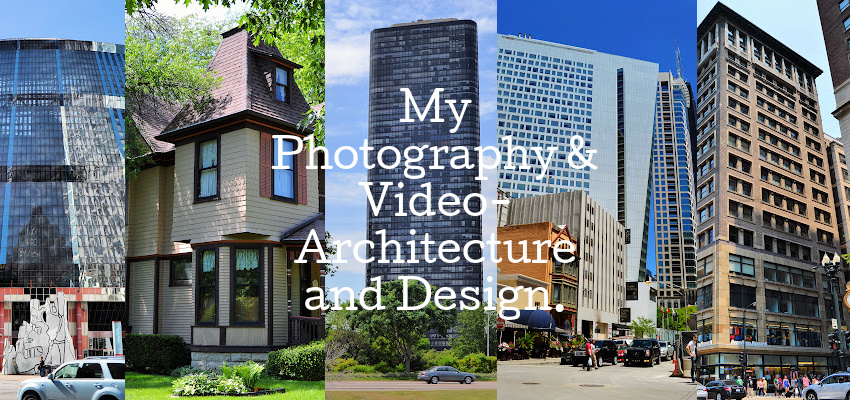
FEATURE image: Detail of wood, stone and brick used by architect Joseph Emil Hosek for his 1951 Prairie-style house at 8958 S. Hamilton Avenue in Northern Beverly. See a fuller description and another photograph of the house in this post.
Text & photographs by John P. Walsh.
INTRODUCTION.
The Beverly/Morgan Park community owes its charm and uniqueness to the variety of architecture styles and the plan for residential areas that were laid out in the late 19th century. Historic districts were established to help preserve that ambience.
Prairie School founder Frank Lloyd Wright (1867–1959) designed a handful of houses in Beverly/Morgan Park (4) between 1900 and 1917 as did Walter Burley Griffin who boasts an historic district on 104th Place. Today there are four historic districts – (1) the Ridge Historic District on the National Register of Historic Places, and Chicago Landmark Districts (2) covering historic homes and churches on sections of Longwood Drive and Seeley Avenue, (3) Prairie-style houses designed by architect Walter Burley Griffin, and (4) the train stations along the old Rock Island line.

The Ridge Historic District is an extensive area and one of the largest urban historic districts in the U.S. Boundaries include a substantial amount of historic Beverly and Morgan Park with architectural styles from the 1870s to the 1930s. More homes of historic value that are not in the historic district find designation and protection in the Chicago Landmark Districts.
The Beverly-Morgan Park area is a former homeland of the Potawatomi peoples. In 1833, the Native Americans ceded their land rights to this area to the U.S. government. In 1839, John Blackstone purchased 300 acres encompassing land known as the Ridge, a heavily wooded highland. Chicago and Fort Dearborn were accessible by an indigenous trail, also called the Vincennes Trail.
The area has mature trees, long, winding streets and old houses set back and nestled into hilly green plots. Morgan Park is the older community started in 1844 and later annexed to Chicago in 1914. Its original land tract was bought from John Blackstone by Englishman Thomas Morgan, between 91st and 119th street along the west side of Longwood Drive (the Blue Island Ridge). The area was a farming community until, after the Civil War, Morgan’s children sold the land to the Blue Island Building and Land Company, and, in 1869, Thomas F. Nichols planned a picturesque subdivision with winding streets, small parks, and roundabouts that evoke images of an English country town. Although the Chicago, Rock Island & Pacific railroad laid tracks through the area in 1852, commuter service to downtown was established over 35 years later, in 1888, which was six years after Morgan Park incorporated as a suburban village.

Following the Chicago fire, Morgan Park developed quickly in the 1870s including Morgan Park Military Academy (1873), Baptist Union Theological Seminary (1877), and Chicago Female College (1875). The seminary was run by Thomas Wakefield Goodspeed (1842-1927) and William Rainey Harper (1856-1906) who established The University of Chicago in Hyde Park in 1890. The seminary left Morgan Park at that time to become the University’s Divinity School. The political battle for Morgan Park’s annexation to Chicago resulted in its suburban women voting overwhelmingly for annexation in 1914 because it meant better city services and schools.
The Chicago, Rock Island & Pacific railroad had opened a station at 91st Street in 1889 and called it Beverly Hills which became the name for the whole area north of 107th along the Ridge. Beverly’s churches and schools reflected the community’s growth from east to west. Beverly (or Beverly Hills) developed along similar lines as adjacent Morgan Park though annexed to Chicago a quarter of century earlier in 1890. Beverly was originally part of the village of Washington Heights to the east which was also annexed to Chicago in 1890.
Notable Buildings in Beverly/Morgan Park.

H.H. Waterman (1869-1948), a Wisconsin native, was a Wright contemporary. Waterman was known as Morgan Park’s “Village Architect” because he designed so many buildings in the community (no less than 15) even as Waterman also built houses out-of-state. Waterman’s architecture is vibrantly creative yet stately and recognizable by their charming and irregular designs. The J.T.Blake House is from the early mid 1890’s, a fecund building period for Waterman. It has a steeply pitched and swooping gabled roof that is asymmetrical and a jutting angled stairway bay. The house materials are stone, wood, and stucco.

Another H.H. Waterman confection is the so-called “Honeymoon Cottage” (above) nestled onto a broad, hilly corner Ridge lot, built in 1892. Waterman built this house for his young wife, Ida May Vierling (1872-1896), who died at 24 years old in 1896, leaving the talented architect alone to raise their baby daughter, Louise Hale Waterman (1895-1953). The house has a pretty terraced entrance with an exaggerated gabled entry porch. There is a high hipped roof that adds to the English cottage style whimsy and disproportion that is the architect’s own home. The Harry H. Waterman House, at 10838 S. Longwood Dr., built in 1892, is part of both the Ridge Historic District and the Longwood Drive District.
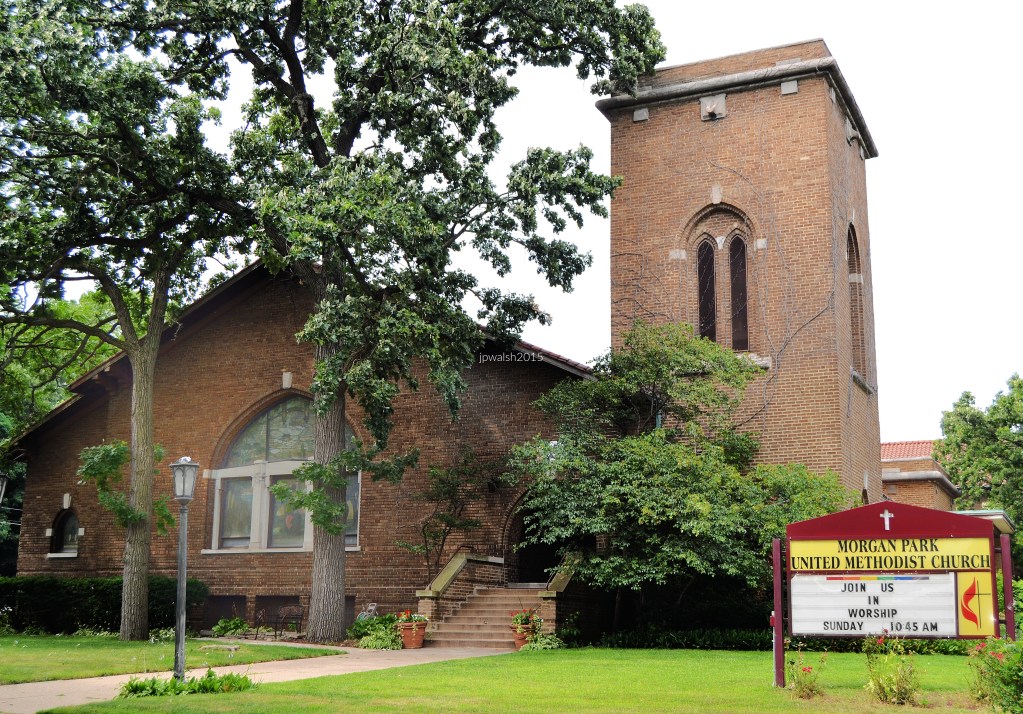
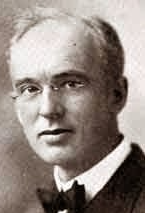
The original office of Perkins, Fellows and Hamilton who designed Morgan Park Methodist Episcopal church’s 1926 addition, was on Chicago’s Michigan Avenue and briefly shared with Frank Lloyd Wright. Perkins, Fellows and Hamilton became known for designing schools and civic buildings with prolific output in the Chicagoland area. Project designs included the Bowen High School, Carl Shurz High School—considered one of the most beautiful high schools in the area—as well as Evanston Township and Winnetka’s New Trier high schools. The firm also designed park facilities such as the Lincoln Park Boat House and the Lincoln Park Zoo’s famed Lion House.
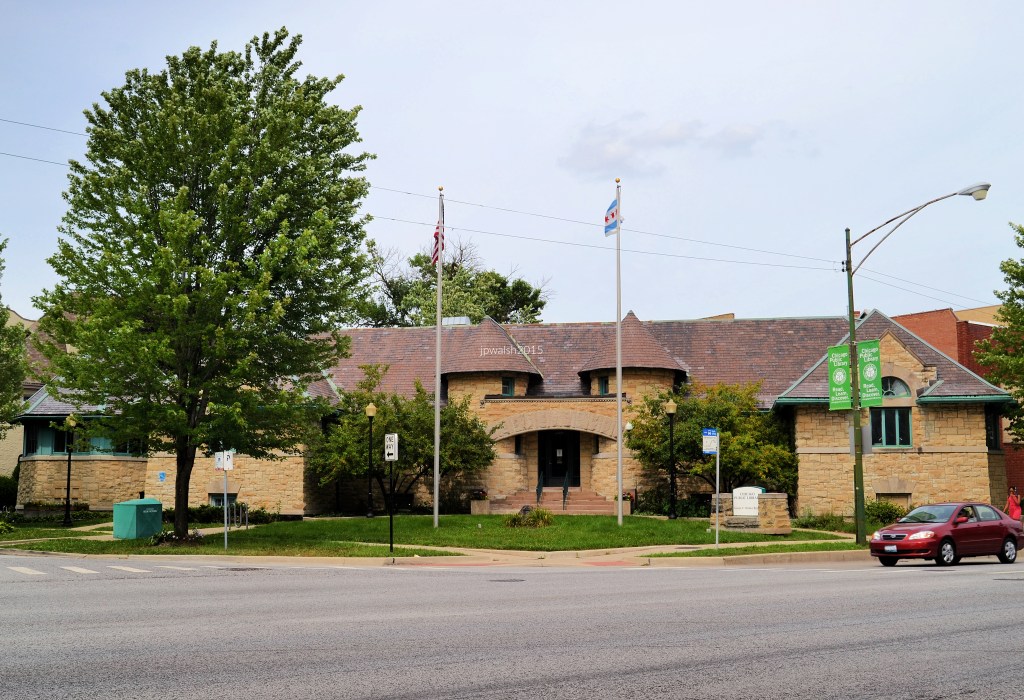
George C. Walker was president of the Blue Island Land and Building Company. The original portion of the library building was designed by Charles Sumner Frost (1856-1931), cost $12,000, and opened on April 22, 1890. In 1929 its space was quadrupled and, in 1995, it received a major renovation. When Chicago Public Library, George C. Walker Branch, was built, Frost was 34 years old and at the beginning of a new stage in his early mid-career. The low-rise stone building is greatly influenced by the Richardsonian-Romanesque style which was prevalent among young architects in the 1880’s and 1890’s before the onset of the Beaux-Arts revival.

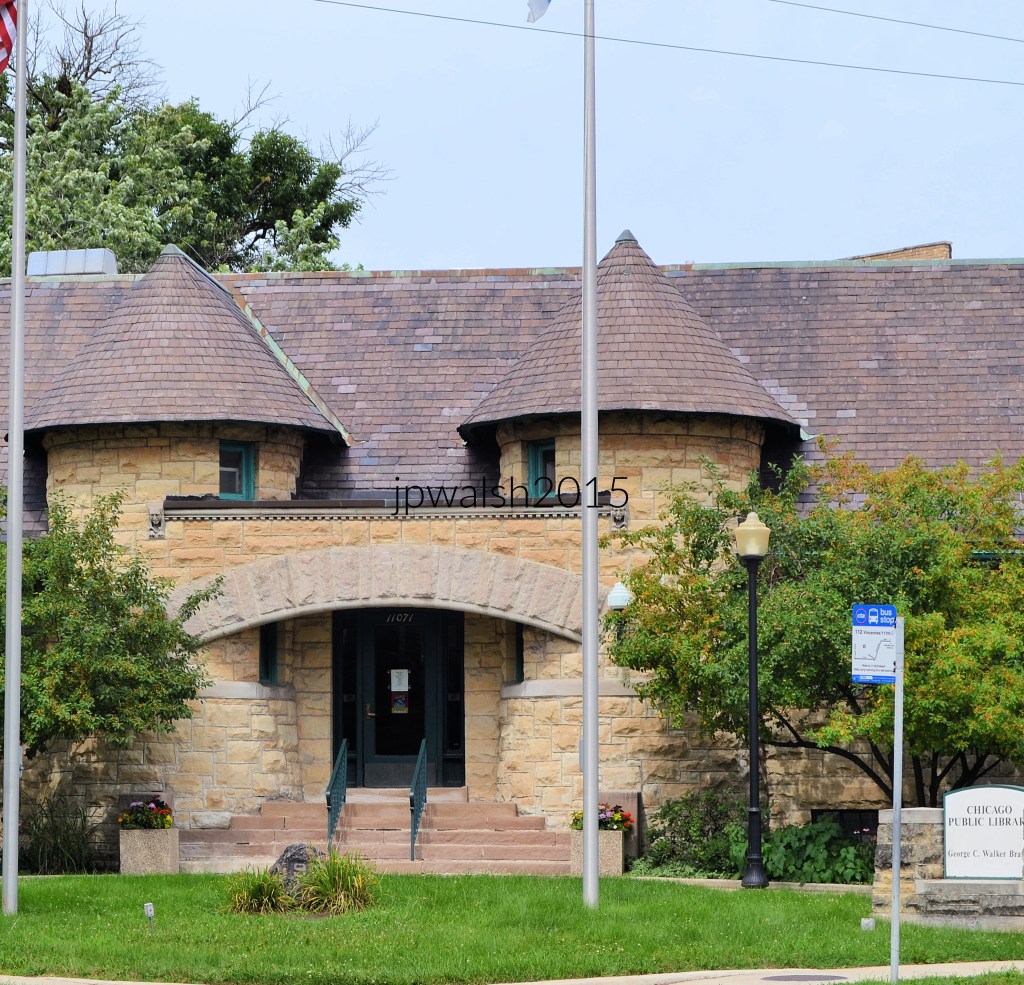
Adapted to a residential-commercial street in a middleclass neighborhood outside downtown Chicago, the building shows the characteristics associated with the Richardsonian Romanesque style, including strong picturesque massing, round-headed arches, clusters of short squat columns, recessed entrances, richly varied rustication, blank stretches of walling contrasting with bands of windows, and cylindrical towers with conical caps embedded in the walling.
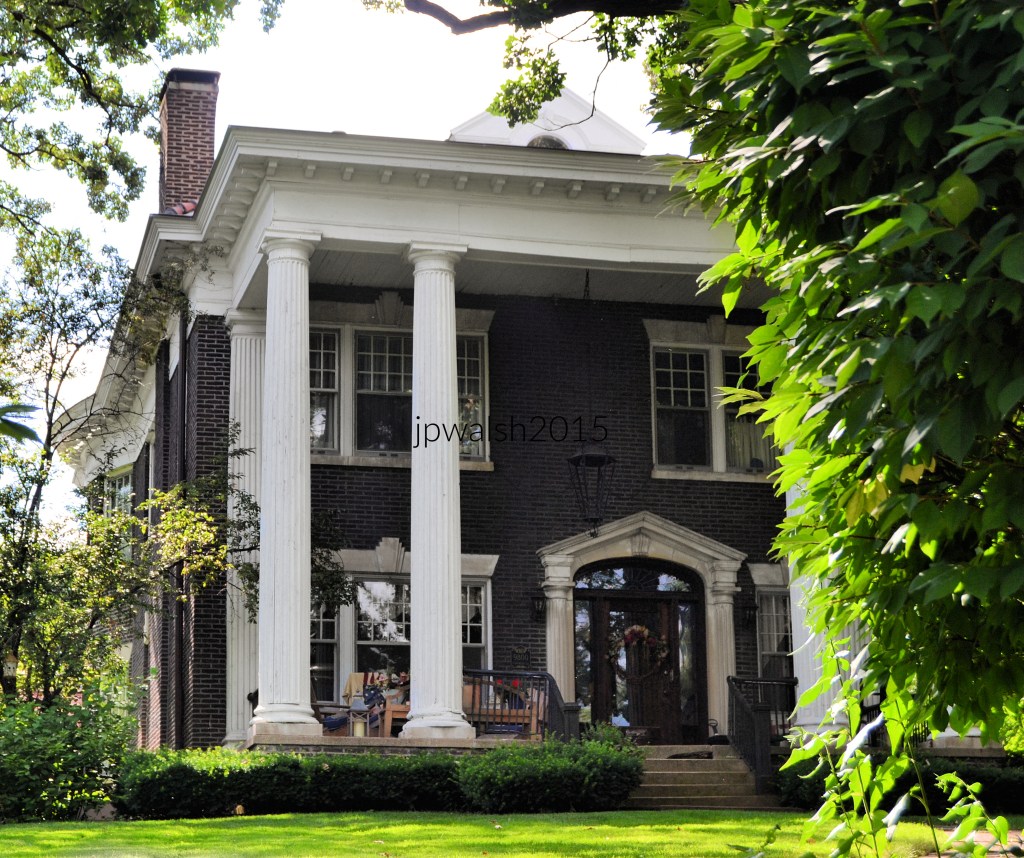
Bryson B. Hill House (above) is a classically-inspired mansion with two-story tall Doric columns helping form the front entrance. While Prairie style of architecture was new and modern, the Chicago “Great House” did not go out of style, at least until the onset of the Great Depression in 1929 which necessitated downsizing of many house plans. Albert G. Ferree (1848-1919/1924) also built two and three flats in Chicago in the same period.

Part of the Longwood Drive Historic District, the Robert S. Givins House, at 103rd Street and Longwood Drive, is also known as the Givins Beverly Castle (above). Built by an early developer, the castle-like keep is built of Joliet limestone that attracts attention for its crenellated battlement and towers with arrow-slit windows. The gatehouse entrance is a traditional Richardsonian Romanesque rounded arch. This late 19th century castle on its hill is probably the community’s best-known landmark.


The Evans House (above) with a low hipped roof is built atop the Blue Island Ridge and not into it. There is a central fireplace around which the expansive house pinwheels. The original stucco exterior was later covered with flagstone. The earliest Wright house in the area is the Jessie Mae and William Adams House (9326 South Pleasant) completed in 1901. Robert and Alberta Evans had been married for 12 years when Wright built this home. Robert Evans was a sales manager and treasurer for the Picher Lead Company and Alberta Wetzel Evans was an award-winning botanist.
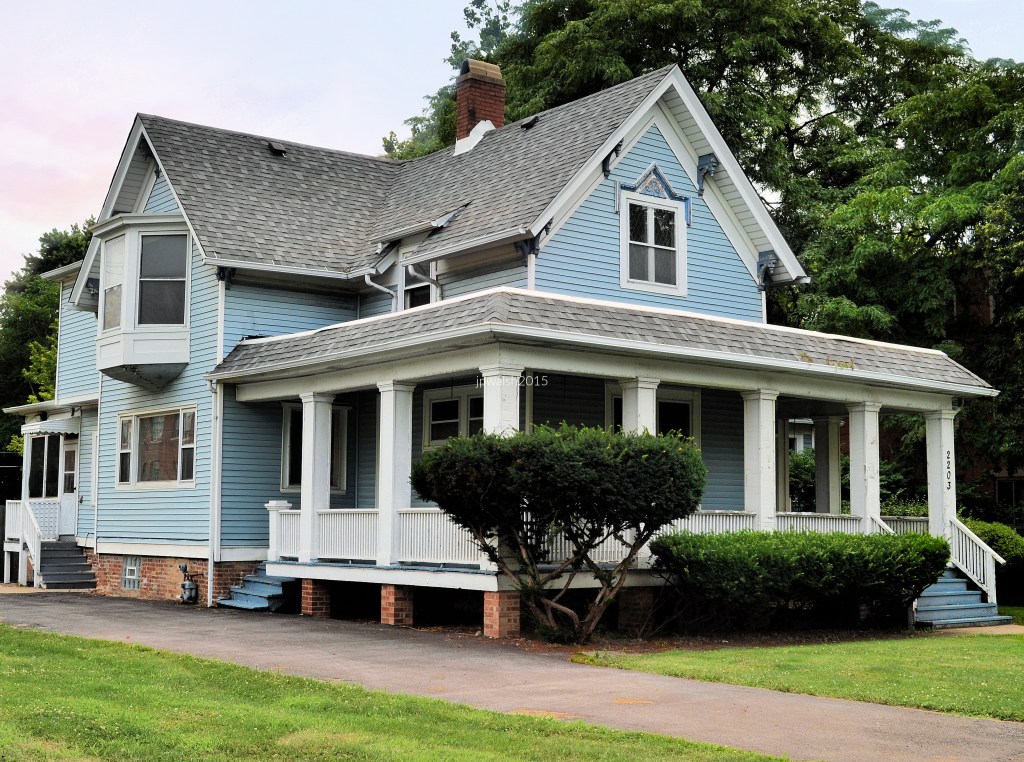
The T-stem Victorian Gothic with stone foundation has a front porch on brick supports with thick square doric columns. There is a steeply pitched roof with brackets under the roof line.
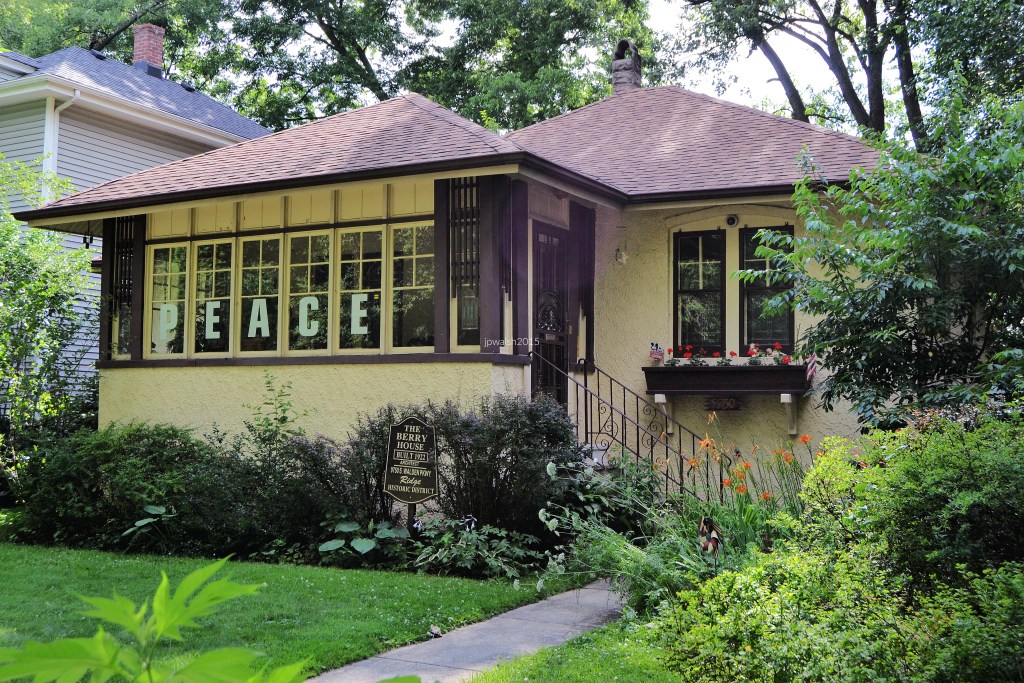


The first floor of the station (above) is faced entirely in wood advertising the woodsy ambience of its then-suburban setting. A waiting room fireplace survives.

The H.A. Parker House sits on a dramatic hill site met by a base of Richardsonian huge rusticated brownstone stone blocks to form a large semicircular porch and tower at the back. The tall roof with steeply pitched gabled dormers on this helps exaggerate the house’s height.




Blended with Mission style, Morgan Park Congregational Church is a handsome red brick Craftsman building that has been identified as the best preserved in Chicago. The church was designed by Patton, Holmes & Flinn. Normand Smith Patton (1852– 1915) was an American architect based in Chicago and Washington, D.C. Patton’s firm specialized in public buildings, particularly Chicago public schools as well as libraries and chapels.
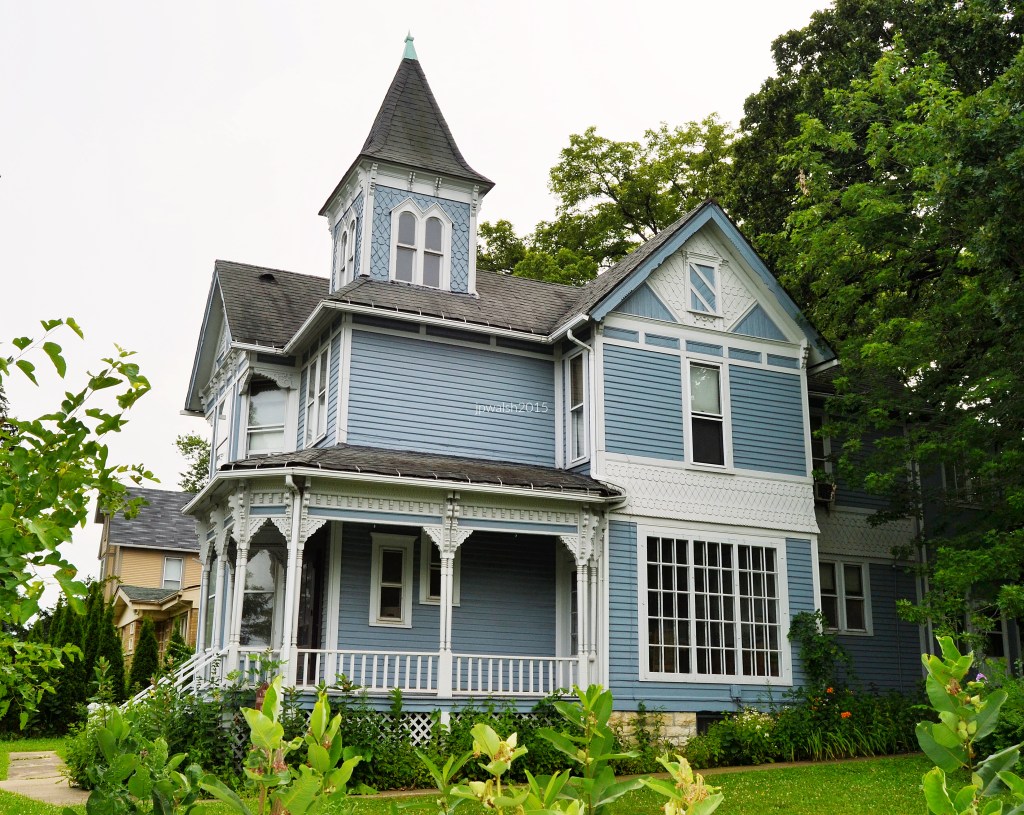
The Sarah D. Clarke House (or W.S. Kiskaddon House) is a miniature Queen Anne-style house with an Italianate corner tower.

The simple front entrance of the J.R. McKee House is on the side hidden by an oblong triangular brick wall. A projecting sunroom that faces the street is encased by a broken arch.

The Sawyer House is a mansion with many windows, three floors of solid red brick from 1908. The fashionable traditional Beaux-Arts style was built in a time of new Prairie style architecture in ascendance.
Horatio R. Wilson started as a draftsman in 1877. In 1889 he was in partnership with another Chicago architect and, in the 1900’s established an independent office. In this early 20th century period Wilson planned and built many important buildings, including the Illinois Theatre in Chicago, the L. C. Case Office Building in Racine, Wisconsin (1905), the Sharp Office Building in Kansas City, Missouri, and the Railroad Station at Wheaton, Illinois, for the Aurora, Elgin & Chicago Railroad. After 1910 he was associated with John A. Armstrong in organizing the firm of H. R. Wilson & Company of which he remained the head until his death. During this later period important examples of his firm’s works were the Macmillan Publishing Company’s Office Building and Warehouse (1911) in Chicago, erected at Prairie Avenue and 20th Street, including its addition in 1916. Wilson also designed the Raymond Apartment House on North Michigan Avenue, and the Surf and Sisson Hotels in Chicago. Architect Horatio R. Wilson also designed the South Michigan Avenue building that would later house Chess Records and the Milwaukee mansion that holds today’s Wisconsin Conservatory of Music.
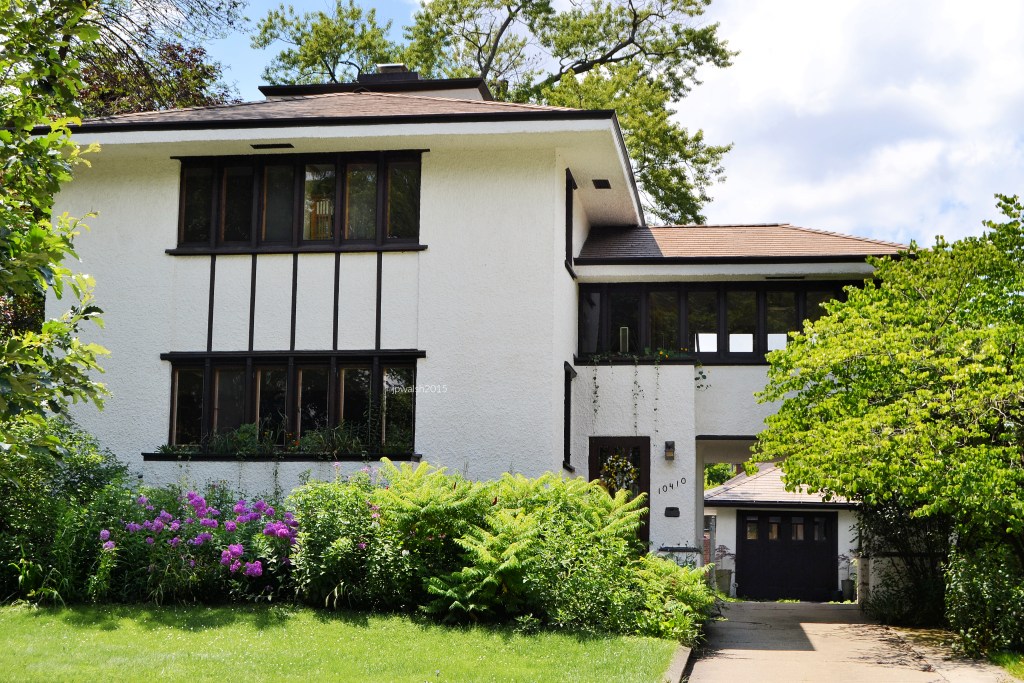
The Howard Hyde House is an American System Built home designed by Frank Lloyd Wright and built in 1917. The client was a cashier at International Harvester. Like the era’s popular Sears Catalog homes. Wright designs were prepackaged and ready to build. Wright had a long-term concern for affordable housing and he worked in short term partnerships with builders such as Milwaukee-based Richard Bros. and Burhans-Ellinwood & Co. The Hyde House was built as a model for a proposed subdivision that the U.S. entry into World War One halted. The only other house Wright built under this plan was 10521 S. Hoyne across the street.
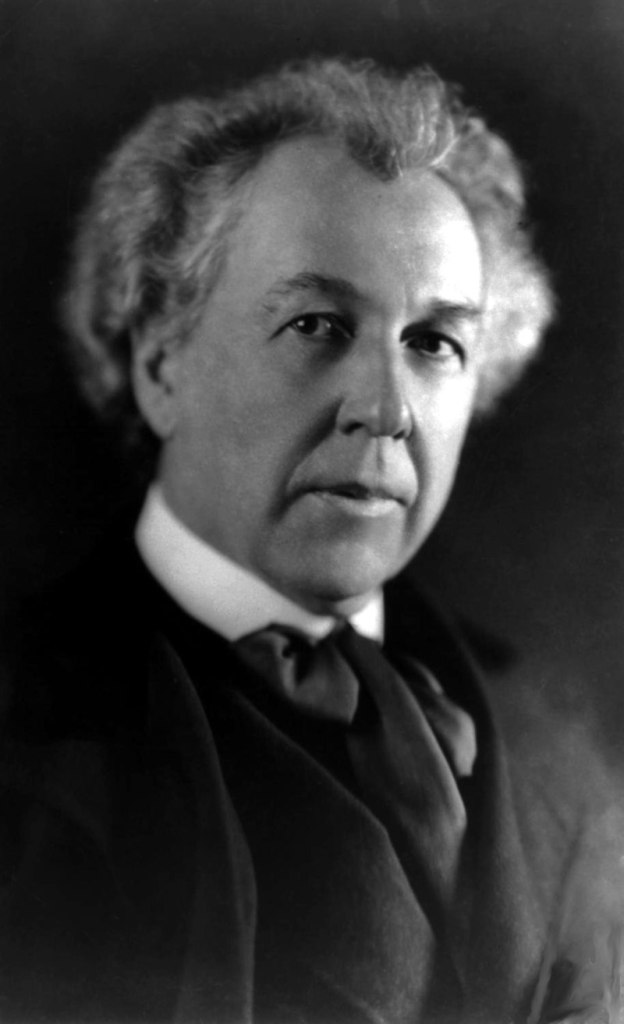


The H. Horton House (above) is Colonial Revival style.

The CSU President’s House is Italian Renaissance Revival with Classical pediments.
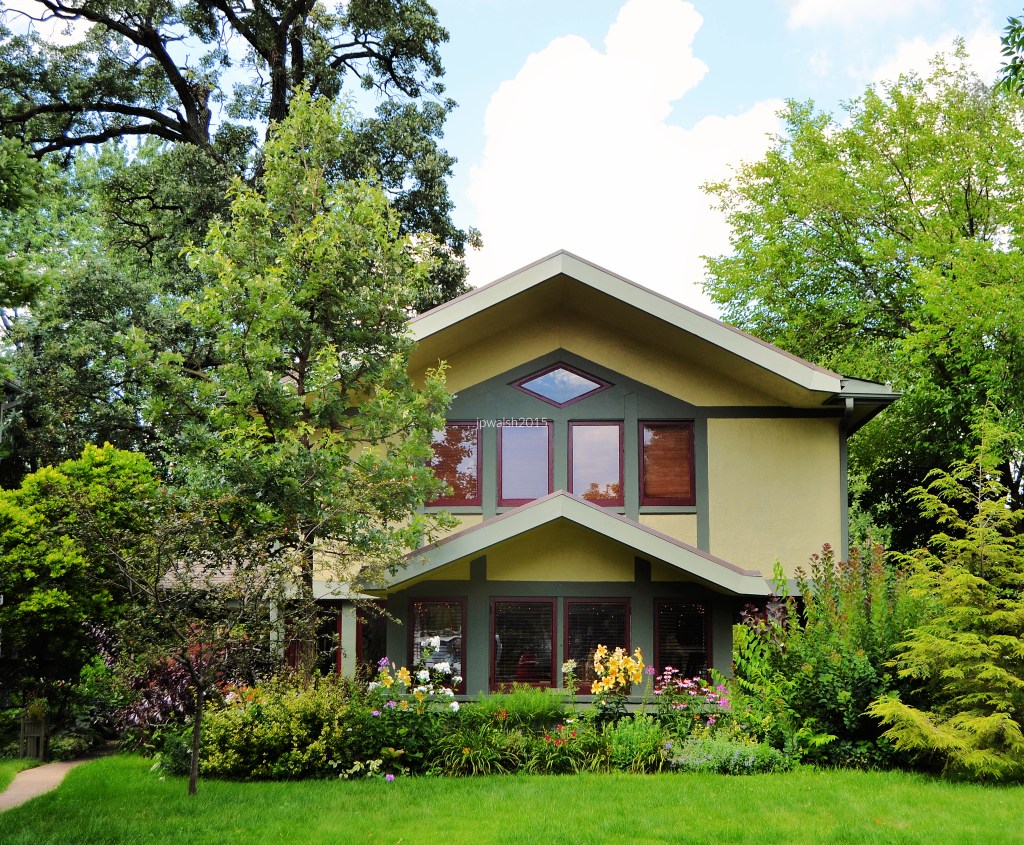
The Russell L. Blount House (2) was designed by architect Walter Burley Griffin (1876-1937) in 1912. The house has the same floor plan as the Blount House (1) also built by Griffin in 1911 at 1724 W. Griffin Place. The 1912 house has a cathedral ceiling which is intimated in the façade trim. Russell L. Blount, a real estate manager for a bank, and lived with his family in and out of Griffin houses as Blount built and sold them for considerable profit.

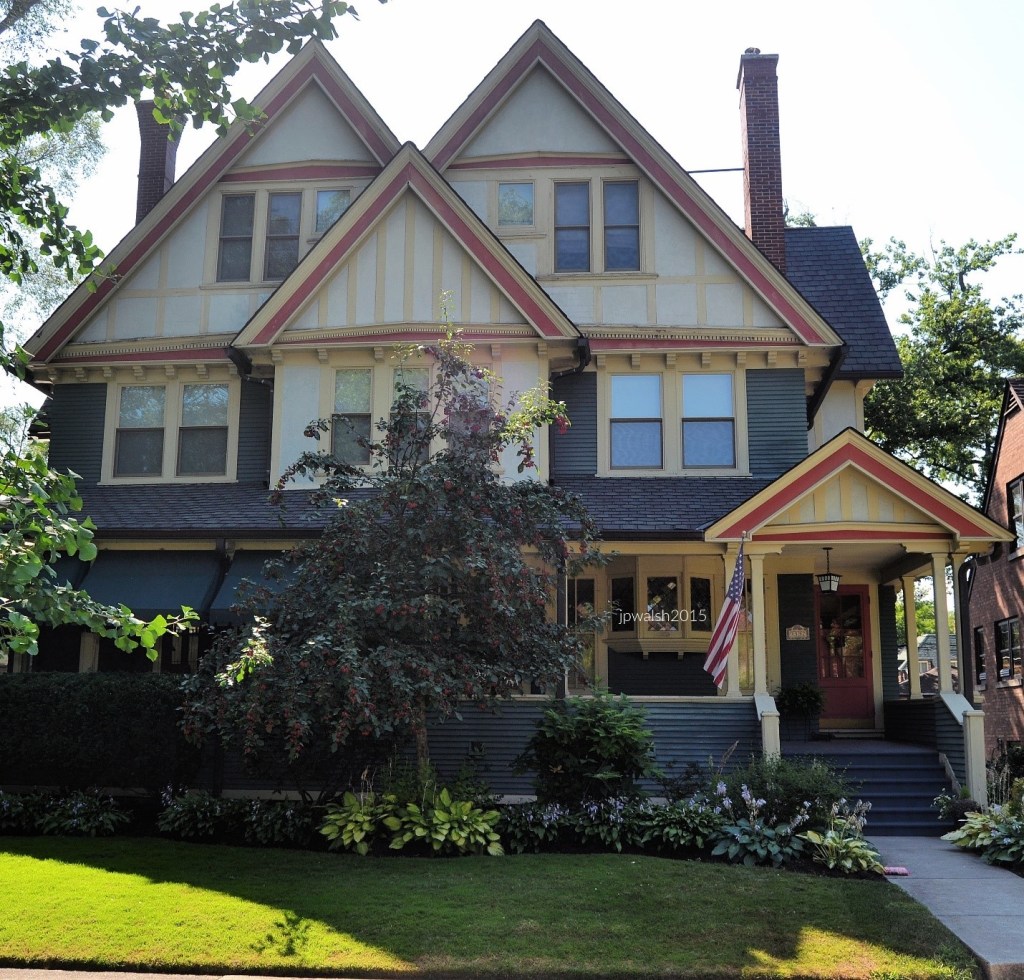
The childhood home of Supreme Court Justice John Paul Stevens (1920-2019) who used to sleep and spend time on this front porch is at 9332 S. Damen Avenue (above). The Waid-Coleman home was built in 1894 and retains its original stained glass, hardwood floors, pocket doors, and beamed ceilings. The exterior was stripped and painted in 2003 which Justice Stevens later commented made the house look now than he remembered.

Other Notable People from Beverly/Morgan Park:
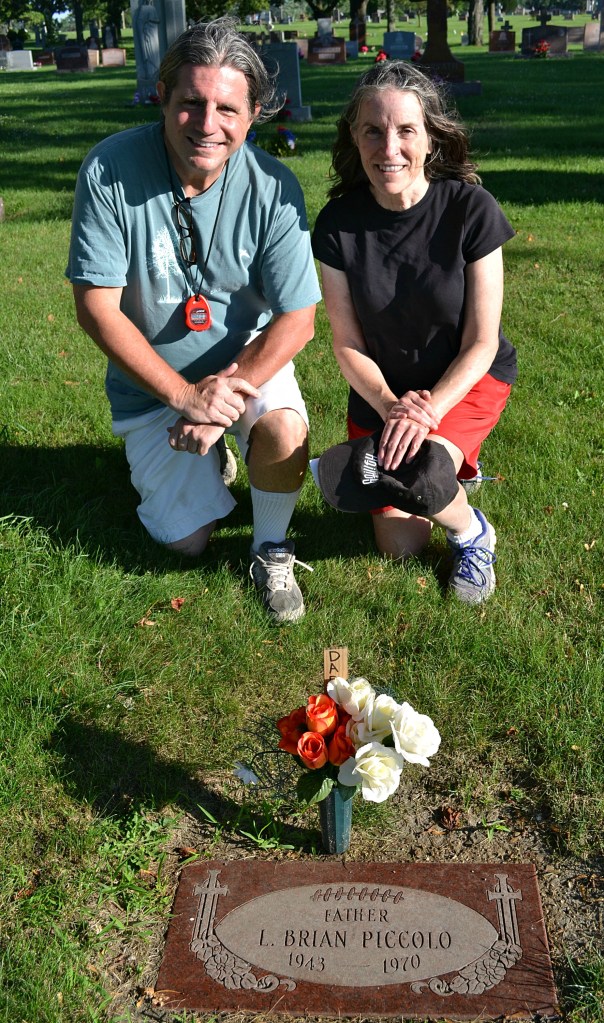

Chambers House, 10330 S. Seeley, Chicago, 1874.
The Chambers House (above) has a well-preserved French Tower. The architect is unknown who built this suburban villa from the 1870s and which boasts plenty of style and details.
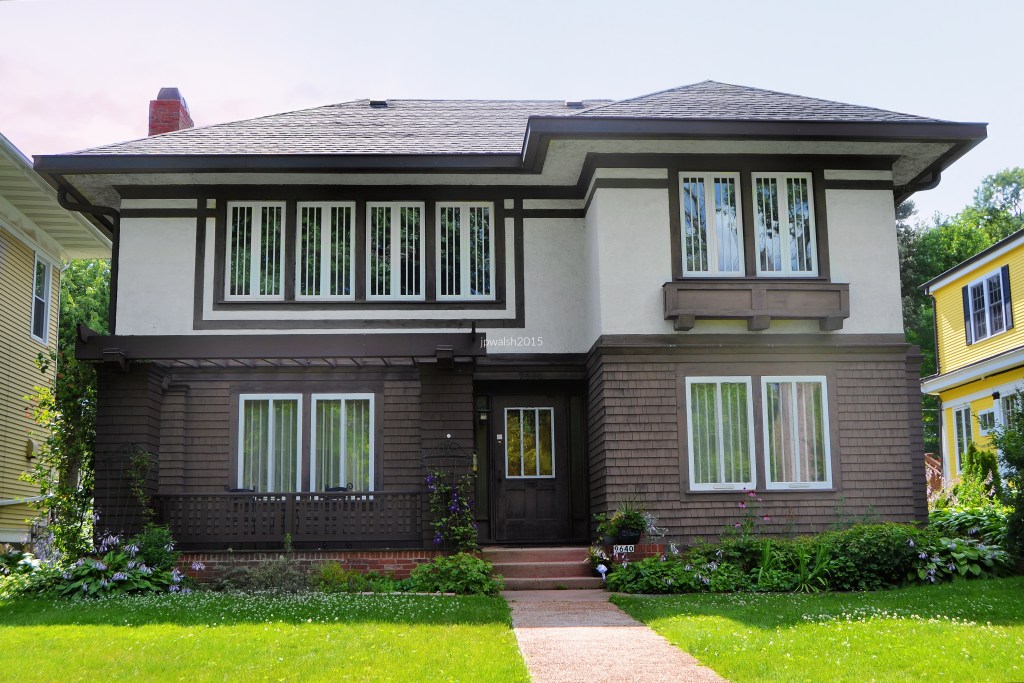
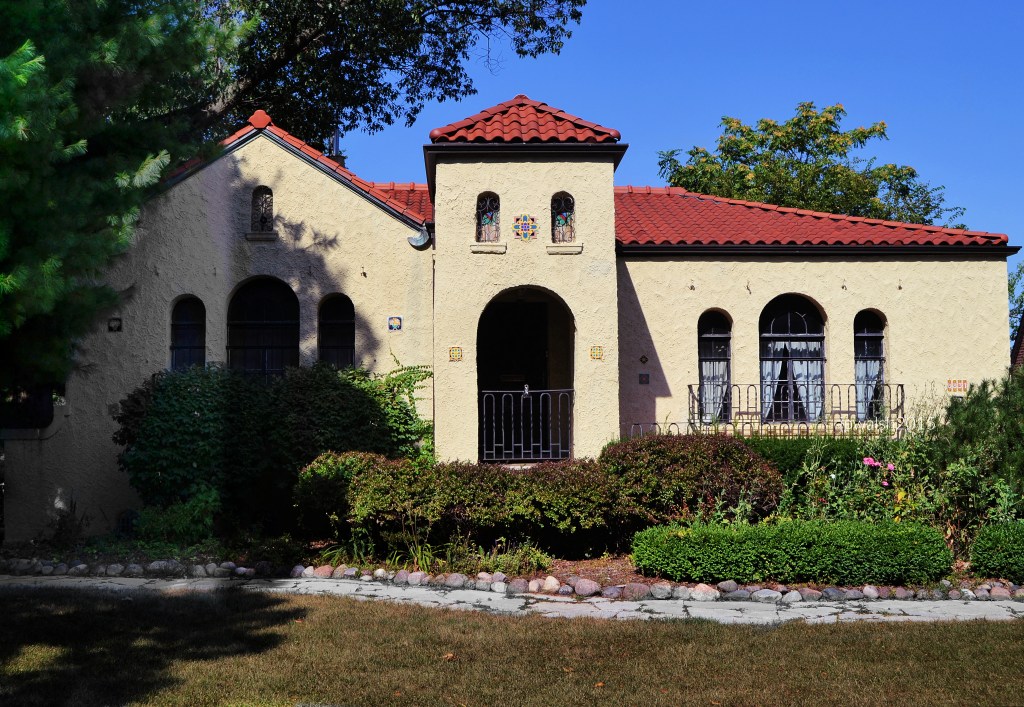
This modest late 1920’s home dressed in a Spanish Revival (or southern California hacienda) style has a central miniature tower and blind arches. Its colorful decorative tiles embedded into the stucco are original. The architect of the Ignatius Chap House (above) was Homer Grant Sailor (1887-1968) who was one of the last draftsmen for Louis Sullivan. In 1917 Sailor established his private practice, designing small Prairie School residences, low-rise commercial buildings and churches in the Chicago area. His work drew upon Sullivan’s simple massing and exhibits a program of applied terra cotta ornament more restrained than that of Sullivan.



The G.W. Reed House (above) is a massive building with irregular massing and that has 4 wings which pinwheel around a central core. With its assortment of beams, arches, and crenellations, the style is an amalgam of medieval, late medieval/early Renaissance, and with some Classical details. Built in 1929, the brick and limestone mansion on a Beverly hillside suggests a Tudor mansion added onto over different time periods. The house is one of two known extant works in Chicagoland of its architect, James Roy Allen (the other is the main gate of the Lake Forest cemetery at Lake Road). Allen designed the home for an executive of the Peabody Coal Company. The house has 19 rooms—plus a servants’ residence with three more rooms—and stands on one acre in the Dan Ryan Woods section of north Beverly. The interior is carved oak and walnut moldings set off by leaded glass windows, with four fireplaces and the original sterling silver andirons, as well as sterling silver sconces.
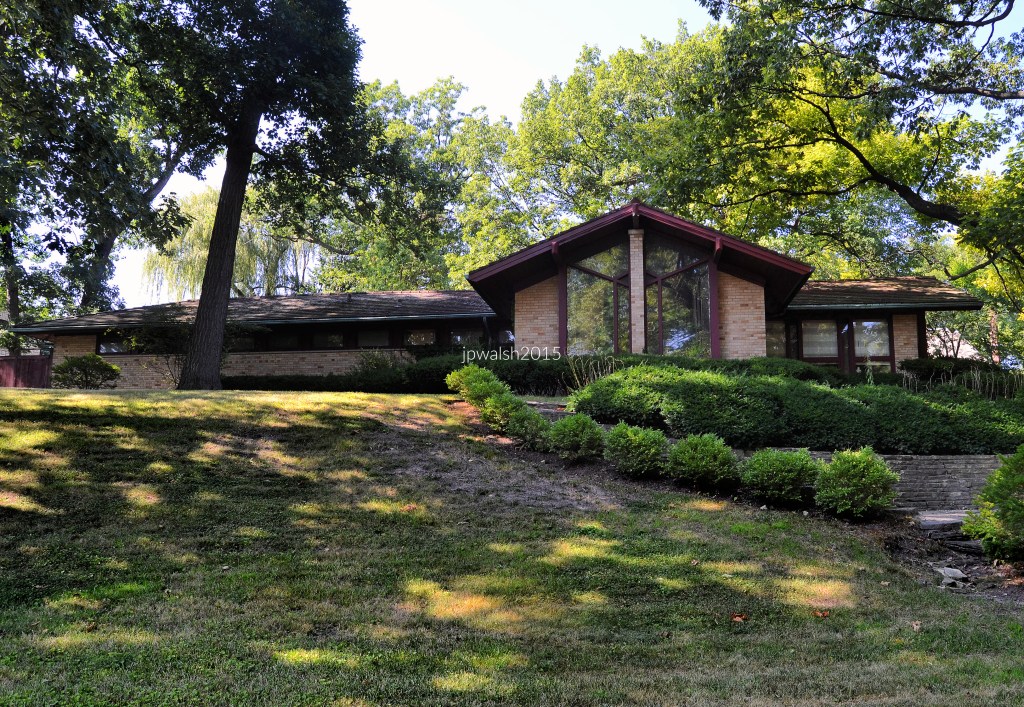
The M.H. Phillips House (above) is a sprawling Late Prairie style single-story house on a northern Beverly hillside. It is by architect and engineer William G, Carnegie (1888-1969) who reiterates in the house design the popular idiom of Walter Burley Griffin with its deep eaves and patterned wooden muntins on the windows.

Beverly/Morgan Park displays work by generations of Hetherington family architects. This family’s architectural legacy began with John Todd (J.T.) Hetherington (1858-1936) who designed residences, churches, banks, and parks in Chicagoland. His son, Murray D. Hetherington (1891-1972) designed the Brewer House (above). He was the most prolific of the Hetherington architects to design in Beverly/Morgan Park and worked in the English Manor style, which is Tudor Revival sans half timbering. The Brewer House is a prime example of his work, many of these elegant residences designed in the booming 1920s into the 1930s. Hetherington paid close attention to the landscape settings of his houses as the Brewer House also conveys set atop hills and nestled by the Dan Ryan Woods. Using materials such as clinker brick and limestone the architect added texture and contrast to his designs and gave each house an individual character. The Brewer House’s irregular roofline with its variegated slate and random sized slabs are a case in point for this well-designed and constructed individuality. Hetherington interiors are also well designed and appointed with the modern design of large windows.

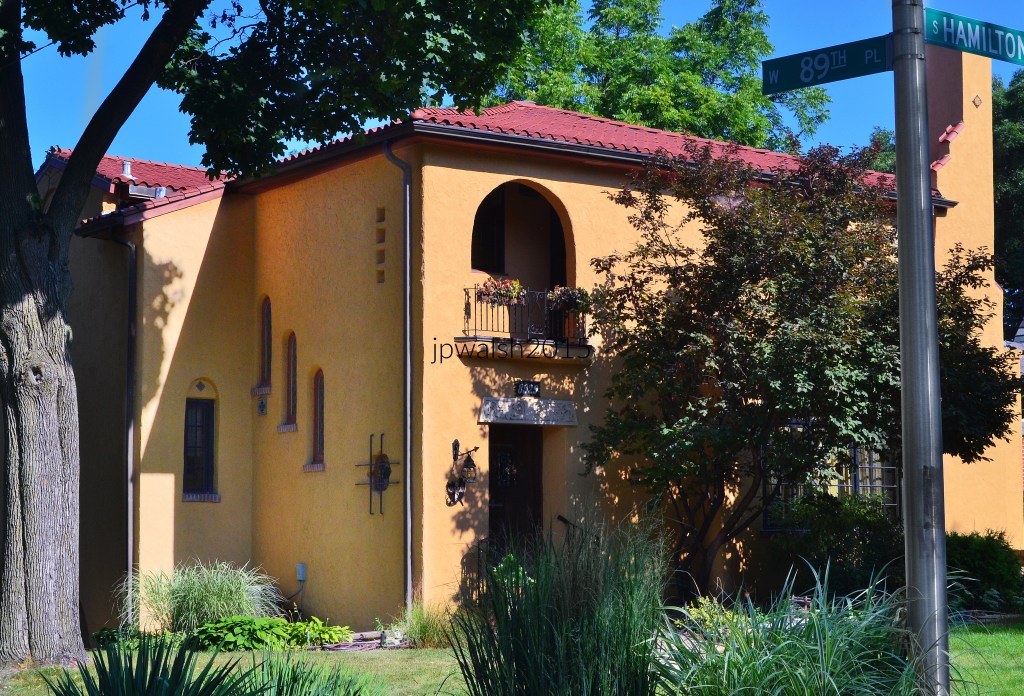
J.A Brough House (above) is a stucco Spanish Revival house on a corner lot by Murray D. Hetherington in 1927. It sits across from the architect’s own home built in 1924.

Joseph E. Hosek (1907-1993) was based in the Chicago area who did buildings for various clients, primarily in southwestern Chicago and suburbs. This large Prairie-style multi-level home at 8958 S. Hamilton Avenue has 5-feet wide eaves and, in a nod to a popular post-war style, variegated facing stones.


S.P. Balzekas House (above) is a stylish Prairie and Modernist mid1930’s house. William Sevic was an American architect, active in Illinois.

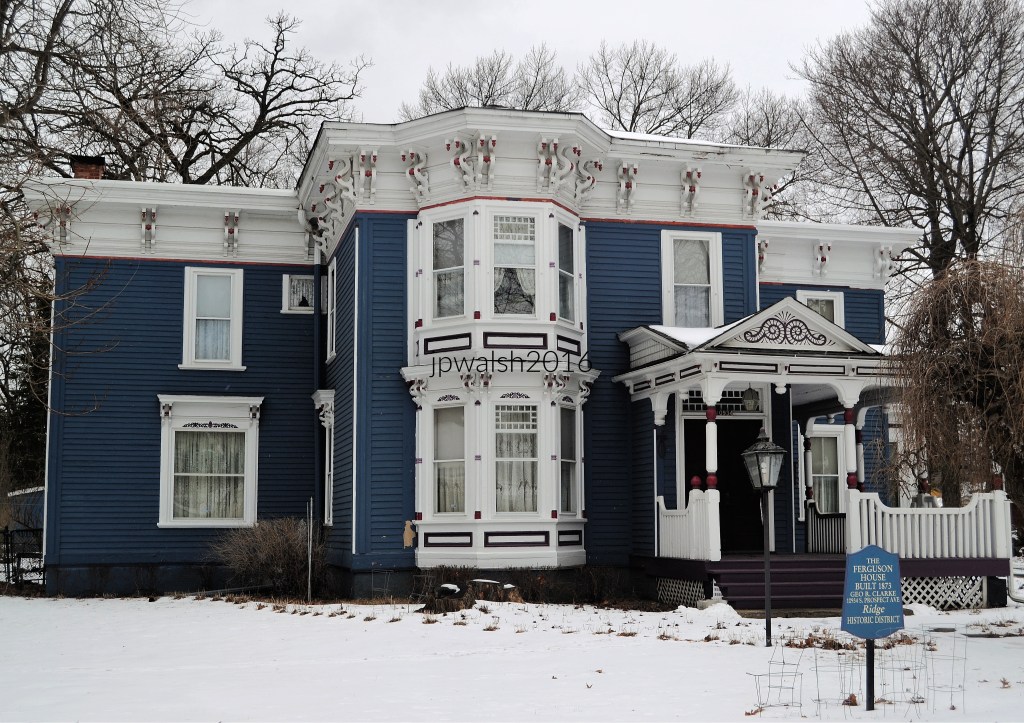


The L.S. Dickey, Jr. House is a successful example of the eclectic Arts & Crafts style. Seen here is its half-timbered double gable. Chatten & Hammond were a prolific architectural partnership. In 1907, Charles (C.) Herrick Hammond (1882–1969) formed a partnership with Melville Clarke Chatten, a firm that expanded to become Perkins, Chatten & Hammond in 1933. The partnership lasted until the early 1950s.

The Dr. W.H. German house is a catalog of the decorative power of wood sheathing, clapboards, patterned shingles, fretwood, and half timbers. Frederick G. German (1836-1937) was a Canadian-American architect with offices in the 1880s in Duluth, Minnesota.
SOURCES:
https://www.localarchitecturechicago.com/prairie-architecture-in-chicagos-beverly-and-morgan-park-neighborhoods/ – retrieved April 5, 2023.
https://www.findagrave.com/memorial/169124930/joseph-emil-hosek – retrieved April 5, 2023.
https://researchworks.oclc.org/archivegrid/collection/data/974991926 – retrieved April 5, 2023.
https://www.chicagotribune.com/suburbs/daily-southtown/ct-sta-brian-piccolo-beverly-st-0618-20200617-3ialbd3zarbuvj35lkq6mhfhta-story.html – retrieved April 5, 2023.
https://bapa.org/the-legacy-of-hetherington-homes/ – retrieved April 4, 2023.
https://www.archinform.net/service/search.htm?q=william+sevic#MenueRESU – retrieved April 5, 2023.
https://bapa.org/home-tour-what-makes-hetherington-homes-so-special/ – retrieved April 4, 2023.
https://www.findagrave.com/memorial/224717333/william-george-carnegie – retrieved April 4, 2023.
https://www.chicagotribune.com/suburbs/daily-southtown/ct-sta-beverly-architecture-st-0915-20170915-story.html – retrieved April 4, 2023.
https://www.chicagomag.com/real-estate/july-2009/sale-of-the-week-well-manored-in-beverly/ – retrieved April 4, 2023.
https://www.artic.edu/artworks/262112/homer-grant-sailor-papers – retrieved April 4, 2023.
https://webapps1.chicago.gov/landmarksweb/web/landmarkdetails.htm?lanId=13024 – retrieved April 3, 2023.
https://www.ancestry.com/genealogy/records/albert-g-ferree-24-bx9v03 – retrieved April 3, 2023.
https://www.findagrave.com/memorial/77617888/albert-g-ferree – retrieved April 3, 2023.
Jisi, Chris (December 2007). “The Inspiration”. Bass Player. pp. 36–47. Archived from the original on December 1, 2007 – retrieved April 3, 2023.
Edwards, Lee (January 22, 2014). “Aja Evans Details Her Journey to the 2014 Winter Olympics”. TheChicagoCitizen.com. The Chicago Citizen Newspaper. Archived from the original on September 28, 2018. Retrieved April 3, 2023.
https://www.chipublib.org/fa-beverly-morgan-park-collection/ – retrieved April 3, 2023.
“Advertisement for the Blue Island Land and Building Company”. Chicago Daily Tribune: 1. September 27, 1872.
“Citizens to Hail Library Jubilee at Morgan Park – Branch’s History Partly that of Whole Area”. Chicago Daily Tribune: SW2. April 21, 1940.
https://webapps1.chicago.gov/landmarksweb/web/architectdetails.htm?arcId=8 – retrieved April 3, 2023.
https://www.chicagomag.com/real-estate/March-2015/This-Morgan-Park-Art-Crafts-Home-Is-A-Steal-at-445000/ – retrieved March 30, 2023.
AIA Guide to Chicago, 2nd Edition, Alice Sinkevitch, Harcourt, Inc., Orlando, 2004, pps. 472-483.
https://www.wisconsinhistory.org/Records/Property/HI54346 – retrieved march 30, 2023.
https://www.beverlyreview.net/special/good_news_2022/article_ed85f672-1d80-11ed-876c-1fef799360d8.html – retrieved March 30, 2023.
Lathrop, Alan K. and Firth, Bob. Churches of Minnesota: An Illustrated Guide, (Google Books), University of Minnesota Press, 2003, p. 297, (ISBN 0816629099).
Montague, M.L. (1901). Biographical Record of the Alumni and Non-Graduates of Amherst College (’72-’96) – The Third Quarter-Century. Amherst: Carpenter and Morehouse, Printers. p. 26.
“Search results for Normand S. Patton, Holmes and Flinn Architects, Chicago, Illinois”. Carleton Digital Collections. – Retrieved March 31, 2023.
Abigail Ayres Van Slyck (1995). Free to All: Carnegie Libraries & American Culture, 1890-1920. University of Chicago Press. p. 60. ISBN 978-0-226-85031-3. Retrieved March 31, 2023.
Montague, M.L. (1901). Biographical Record of the Alumni and Non-Graduates of Amherst College (’72-’96) – The Third Quarter-Century. Amherst: Carpenter and Morehouse, Printers. p. 458.
https://beverlyhillschicago.wordpress.com/walter-burley-griffin-historic-district/ – retrieved Match 31, 2023.
https://nla.gov.au/nla.obj-150313700/view – retrieved March 31, 2023.
https://www.prairieschooltraveler.com/html/il/chicago/griffin/blount2.html – retrieved March 31, 2023.
Maldre, Mati, and Kruty, Paul. Walter Burley Griffin in America. Urbana, Illinois: The University of Illinois Press, 1996, p. 57, 171.
https://www.findagrave.com/memorial/37977588/walter-burley-griffin – retrieved March 31, 2023.
https://www.findagrave.com/memorial/6819516/marion-lucy-mahony – retrieved March 31, 2023.
https://archive.artic.edu/magicofamerica/moa.html – retrieved March 31, 2023.
https://history.perkinswill.com/prologue/ – retrieved March 31, 2023.
http://www.connectingthewindycity.com/2014/01/dwight-perkins-and-city-beautiful.html – retrieved March 31, 2023.
https://prabook.com/web/horatio.wilson/1717553 – retrieved March 31, 2023.
https://chicago.curbed.com/2015/6/24/9946940/windsor-avenue-home-on-the-market-12m-horatio-wilson – retrieved March 31, 2023
https://ancestors.familysearch.org/en/9KGV-CND/harry-hale-waterman-1869-1948 – retrieved March 31, 2023.
https://bapa.org/pike-house-is-one-of-landmarks-illinois-most-endangered-historic-places/ – March 31, 2023.
http://www.encyclopedia.chicagohistory.org/pages/842.html – (Morgan Park) retrieved April 3, 2023.
http://www.encyclopedia.chicagohistory.org/pages/134.html – (Beverly) retrieved April 3, 2023.






